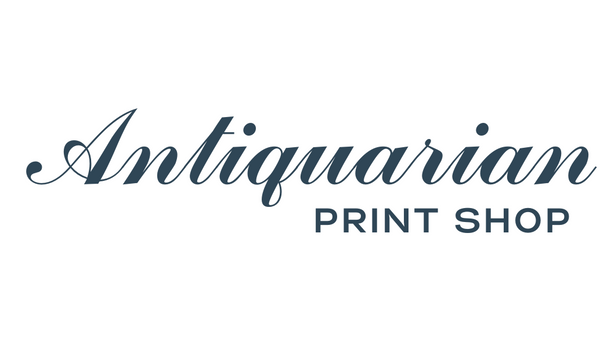Antiquarian Print Shop
Bird, Keulemans John Gerard, Cinnyris Bouvieri, c1876 - 1880,
Bird, Keulemans John Gerard, Cinnyris Bouvieri, c1876 - 1880,
Couldn't load pickup availability
Date: 1876 - 1880
Artist: Keulemans John Gerrard
Paper Size: 245 x 345mm
Condition: good
Technique: Lithograph
Description: Hand coloured lithograph
Biography:
John Gerard Keulemans
Keulemans was born in Rotterdam. As a young man, he collected animal specimens for museums such as the Natural History Museum in Leiden, whose director, Hermann Schlegel, encouraged Keulemans and sent him on the 1864 expedition to West Africa. In 1869, he was persuaded to illustrate his Monograph of the Family of Kingfishers (1868-1871) and to move to England where he lived for the rest of his life. He was married twice and had eight children by his first wife and seven children by his second wife. Only nine of his children reached adulthood. He also wrote topics on spirituality and claimed he had a premonition at the moment of death of one of his sons. He died in Ilford, Essex, (now part of Greater London) and is buried in Buckingham Road Cemetery, Ilford, in an unmarked grave.
Keulemans regularly provided illustrations for The Ibis and The Proceedings of the Zoological Society. He illustrated many important bird books, including “A History of the Birds of New Zealand(1873, 1888)”, History of the Birds of Ceylon (1880)” “Monograph of the Bucerotidae (hornbills) (1887–1892)” “Monograph of the Turdidae (thrushes) (1902),” “Biologia Centrali-Americana (1879–1904), “.Birds of South Africa (1887)” and “ History of the Birds of Europe (1871–1896)” and a single illustration in The Journal of the Linnean Society.
One of his last great achievements was his contribution of over one hundred plates for “Monograph of the Petrels (1907–1910).” He also spent some time collecting birds in Cape Verde and West Africa
The only significant biography of Keulemans is by Jan Coldewey and Tony Keulemans, Feathers to Brush, a book that includes a bibliography of the artist's publications, a genealogical tree, and appendices detailing his spiritualism, with a sample of his financial correspondence. Also of note is a contemporary obituary of Keulemans in the journal British Birds (1912). Tony Keulemans later wrote Beyond the grave, which tells the story of a remarkable discovery of a painting John Gerrard had made of his own gravestone. And finally, Tony Keulemans wrote an errata list to Feathers to Brush, which includes additional literature references and new genealogical findings.
Keulemans's work is characterized by its consistency, showing little change over the course of his career, and focused to an extraordinary degree on the rendering of fine detail. These generalizations have also proven to be the basis for unjustified criticism of his work,[5] since the nature of scientific illustration places a premium on consistency. Aside from this, a number of critics have rightly placed Keulemans above his contemporaries;[6] his ability to create accurate and vivid representations of birds gave him prominence in his field.
Keulemans was prodigious in his output - he was commissioned to paint pictures of birds extensively throughout his career, and his prints were published continuously from 1867 to 1911. Keulemans' first prints appeared in two books by Francois Pollen, Contributions a l'histoire naturelle des Lemuriens (1867) and Een blik in Madagascar (1867). Some appeared after his death until 1915 (Mathews, Birds of Australia); he had rendered the images on stone well before the publication of these works. A calculation of his total output gives about 4,000-5,000 published illustrations. The vast majority of these were vignettes published within octavo-size books and publications, and a great number of his works also appeared in quarto (Dresser/Europe) and in-folio (Seebohm/Turdidae and DuCane Godman/Petrels). While the subject of his illustrations was almost entirely avian, he was also commissioned to create portraits of mammals, insects, and shells.
Most of the illustrations by Keulemans were produced through traditional lithography, allowing for a finished product that depicts a vivid, lifelike figure through depth and tone. Printing was carried out by the two firms of Mintern and Hanhart, and early in his career, some were printed by P. M. W. Trap. Often, the published lithographs were not coloured, and perhaps some (Journal of the Linnean Society, 1878) were not intended to be coloured. The technique of lithography made it necessary for the print to be coloured by hand. This was done by semi-skilled artisans working in an assembly line in a manner similar to stenciling. While Keulemans' talents as a draughtsman were hardly disputed by his contemporaries, often the finished, coloured plates were the subject of criticism (Sharpe/Alcedinidae). If the depicted colours did not match those of the birds, the value of the finished product was diminished.
Share


